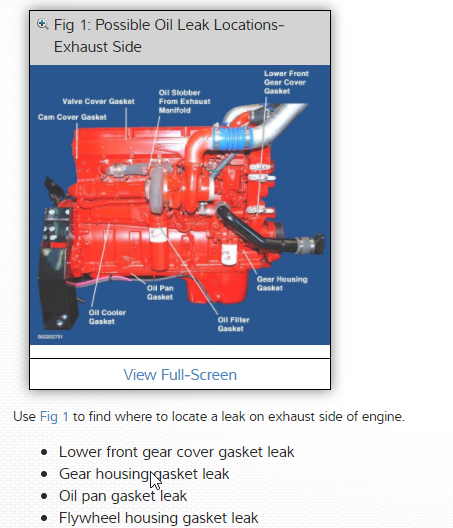Tricky Transmission Leak Detection
 Transmissions have a way of getting the rap for sloppy neighbors. We all know that when selecting a place to live, location is everything. Choose wrongly and life can get pretty messy. Fortunately, we generally have a choice as to where we call home. Transmissions don’t share that luxury.
Transmissions have a way of getting the rap for sloppy neighbors. We all know that when selecting a place to live, location is everything. Choose wrongly and life can get pretty messy. Fortunately, we generally have a choice as to where we call home. Transmissions don’t share that luxury.
Transmissions, as a rule, are placed behind the engine, tucked under the cab. Unfortunately for the transmission, the combination of forward motion of the vehicle and being located lower than the engine makes it very clear that Sir Isaac Newton was most assuredly correct in his discovery of the effects of gravity. Put simply, the transmission, because of its location in the powertrain, catches all the leaks from everything in front of it and above it.
As a result, some leaks may appear to originate from the transmission when they actually come from somewhere else. And sometimes it can be difficult to tell what type of fluid is leaking. For example, the orange engine coolant frequently gets mistaken for red automatic transmission fluid. This is especially true when the leak is minor and has had time to collect some dirt and grime.
You are probably asking, “How could anyone make such a clear misdiagnosis?” Yet, more than one technician with a transmission on the ground has gazed in horror at a few drops of orange coolant visible from the rear top of the engine. Of course, one may feel like an expert diagnostician when those drops happen to be coming from rusty freeze plugs behind the flywheel.
Now, to complicate matters even more, transmissions are not immune from leaking or making a mess elsewhere in the powertrain neighborhood. Rear axles are, after all, the last stop out of town and get the remains of all its leaking neighbors. Another place the transmission can make leak detection a nightmare is through the vent pipe. The vent is sometimes located high up near the engine and can spew oil on the engine if the transmission experiences an overheat event.
Leak detection fluids for different components, along with a black light, will help the technician isolate the type of oil leak. These tests do take time to perform but are real time savers, especially with minor leaks that are difficult to pinpoint.
In general, the simplest approach is to be aware of all the potential leak points in surrounding components. Your truck repair information resource, like TruckSeries from Mitchell 1, can help. Taking the time to properly identify leak sources will save a lot of extra effort and prevent unnecessary expense. Always keep in mind that the simplest of things often create the greatest problems because they simply get overlooked.
Additional tips for repair and maintenance of Class 4-8 trucks may be found in the Mitchell 1 ShopConnection Truck blog: https://mitchell1.com/shopconnection/category/truck

